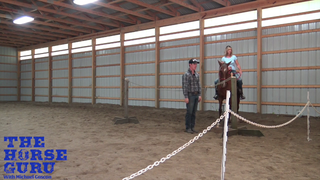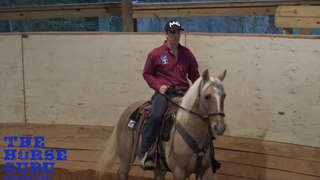Watch the Video Here or continue reading below!
When working with a horse that has sensitive ears, it’s crucial to approach the process calmly and methodically. In this guide, we’ll discuss the best techniques for touching a horse’s ears for the first time, reducing their sensitivity, and building trust.
Why Some Horses Have Sensitive Ears
Horses can develop ear sensitivity due to various reasons, including past negative experiences, lack of handling, or natural skittishness. The key to overcoming this is patience and proper training techniques.
Step 1: Ensure Your Horse is Halter Broke
Before addressing ear sensitivity, make sure your horse is comfortable wearing a halter and being led. A well-halters broke horse is already accustomed to some level of handling, making ear desensitization easier.
Step 2: Avoid Common Mistakes
One of the biggest misconceptions is that you should work on ear sensitivity with a free-hand, natural horsemanship approach. While it’s essential to be natural and calm, allowing the horse too much freedom can lead to resistance and unwanted movement.
Tip: If the horse moves its head away when you attempt to touch its ears, don’t engage in a tug-of-war. Instead, maintain a firm but gentle presence.
Step 3: Use a Hitching Post for Stability
A great technique is using a hitching post to minimize excessive movement while still allowing some freedom. By securing the horse in a way that prevents large, sudden movements, you create a controlled environment where you can work calmly.
Why This Works
- Prevents the horse from swinging its head aggressively
- Keeps both you and the horse safe
- Allows for slow, steady progress without forcing the horse
Step 4: The Gentle Approach to Touching the Ears
Once the horse is secured:
- Approach Calmly: Slowly bring your hands up toward the ears without sudden movements.
- Touch Without Reacting: If the horse shakes its head or moves, keep your hands quiet and steady.
- Massage the Ears: Use soft, circular motions to massage inside and around the ears.
- Stay Consistent: No matter how much the horse moves, continue touching gently without pulling away suddenly.
Avoid These Mistakes:
❌ Getting frustrated if the horse resists
❌ Resorting to forceful tactics like ear twitching
❌ Backing away every time the horse flinches
Step 5: Take the Argument Away
Many people get emotional when a horse resists handling. This frustration often comes from feeling like you don’t have the right approach. The key is to remain calm and remove the argument.
- If the horse is in a position where it can pull away too much, it will keep resisting.
- If it’s secured properly but still has some ability to move, it will gradually learn to accept touch without panic.
Step 6: Practice Until It Becomes Routine
The more consistently you work on ear desensitization, the faster the horse will become comfortable. Over time, horses that go through respect-based training will naturally give you their ears without resistance.
Final Thoughts
Touching a horse’s ears for the first time should be a patient, structured process. By securing the horse properly, keeping your hands steady, and avoiding emotional reactions, you can effectively reduce ear sensitivity. Remember, the goal is to build trust and confidence, ensuring that ear handling becomes a stress-free experience for both you and your horse.










